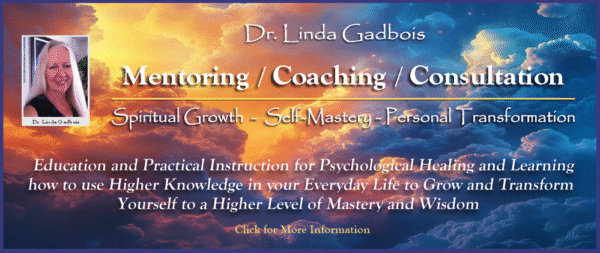How to Begin Taking Control of your Emotional State
Emotional Intelligence as an actual Practice
There’s nothing that controls us more than the emotions we experience or act to produce through the nature of our thoughts. One of the first steps to working consciously with anything is by gaining awareness around it and coming to understand how it operates. By becoming aware of what it is, how it works, the natural relationship it forms as a creative process, and what affects they produce when uncontrolled and haphazard. Emotions exist at the subconscious level of the mind, which means we engage in them, experience them, transmit and receive them, without direct awareness of what’s happening. When we enter into them, they produce pronounced and intense state of mind and bodily sensations and cause us to go unconscious while producing reactive behaviors. Our reactive behaviors create in our life and draw to us immediate consequences.
People who experience intense emotions are usually highly reactive, easy to control through their emotions, and prone to delusions formed out of thinking that’s driven by emotions. While in a reactive state we’re completely unconscious of what we’re actually doing and running on autopilot. Many, when they come out of an outburst or temporary loss of control, only vaguely remember it in terms of what they said and did, and once the realize what they’ve done, feel ashamed, embarrassed, guilty, or regretful. But of course, it’s too late, what’s done is done, and can’t be undone. During reactions, many honestly experience a form of black-out where they’re completely unconscious, and it’s as if something has taken them over, and only start coming back into awareness somewhere in the middle of what they’re doing, and so in a strange sort of way, actually aren’t fully responsible for what they say and do, even though it was still extremely destructive and damaging and came as the result of a complete lack of control. This can make emotionally reactive people very stressful to be around and unpredictable. You have the feeling of walking on egg-shells because you never know how they’ll take something or what will set them off.

So to begin the process of learning how to control your self and avoid being infected by emotions is to approach them with an attitude of understanding them. This can be done through simple self-observation and reflection. We don’t need a scientific explanation in order to understand it in terms of working with it. Emotions are something we experience everyday in an intimate fashion. We first want to look at how emotions are transmitted and received. Notice that you can sense and perceive emotions being put off by someone experiencing them. This is a kind of emanation, projection, or transmission. You sense them because you feel them. You pick up on them as internal sensations located at different spots or areas of your body. While you may not know what caused them, or what thoughts they’re actually having, you know what kind of emotions they are – angry, sad, happy, scared, in love, heartbroken, and so on – because they make you feel the same way. You simply want to notice this transmission and reception of emotions.
Emotions are shared by the entire natural world, and are the primary language or communicative activity of the subconscious mind. You want to begin forming an idea in your mind that the very atmosphere of the Earth that surrounds us and that we’re apart of, is like a field of energy that acts as a carrier wave for the transmission of vibration as emotion that stimulates us producing states of mind. These vibrations as emotions are experienced as qualities of consciousness that move freely through matter, and are transmitted by entering us and activating the same feeling in us. These emotions, in the animal kingdom are designed to create automatic behaviors and activities in the animals as instinct, who, of course, don’t think about things, but act and react as more of a cause and effect type of relationship, where the information of their environment is apart of them, and acts to direct their activities. This transmission of energy designed to produce automatic behaviors affects us also, causing reactions, but the problem is we also form our thinking out of them, and as a result, create whole realities as an illusion that’s mistaken for being real or actual. We create whole realities out of emotional states that render us unconscious and cause us to act in a knee-jerk fashion.
Notice what happens inside of you when you pick up on a strong emotion, one that’s being projected directly at you, or you’re interacting with someone who communicating through the emotion, or is in a reactive state themselves and unloading on you. Notice the intensity while refraining completely from acting on it, while letting it completely rise in you, filling you. Concentrate on being present with it by giving it your full attention. Don’t try to shut it down or suppress it through a feeling of overwhelm. You can hold the emotion fully within you without expressing it. Stay with it in it’s intensity until it peaks and starts dying down. Allow yourself to notice the thoughts you reference and think about as a form of memory associated with it. This usually comes as a scene that starts playing out, of either an experience you had while in this same state, or as the kind of experience this emotion would produce or come from. Whether an actual memory or an imagined one, notice that they come in the same way, as what seems like a memory.
Emotion as a state of mind is always intimately associated with all our experiences, and determines what kind of thoughts we form in our mind, or what previous experiences we continue to play over and over. Emotions have a very active component to them, and tend to make us act in some way according to them. When emotions are intense, behavior is immediate and often explosive or extreme. While we may not experience a clear thought process, the emotion does cause an instant behavior as a reaction that’s produced as a pattern for the body through memory of some form. Emotions not only keep us behaving in the same way, but living out of the same past.
Once you begin practicing this in your daily life, starting with the common emotions that are easy to control, then working your way up, you can begin consciously controlling not only your actual emotions, but your behavior and what you do or who and how you’re being. Because they no longer take place in an unconscious fashion, you don’t go unconscious when experiencing them. As you begin staying conscious and aware of them, from a disassociated and detached perspective of witnessing or observing them, you can literally begin directing and controlling them. You can create an imaginary boundary a couple of feet from your body as a bubble like sphere surrounding your body, that’s a shield where the emotion is experienced on the surface of this sphere and never allowed to penetrate you or produce and affect in you. When you keep the emotion outside of you, yet allow it to fully reflect on the outer boundary, much like looking at it through a lens, you can still see (imagine) the reality or memory inherent in it, while keeping it outside of you. You can look through the lens of the emotion as a perception of it, while never actually feeling it in your body or allowing it to become a part of you. This forms the basis for developing compassion. You may feel the residual affect of the emotion more like an echo or subtle sensation produced by the perception of it, much like your own thoughts elicit emotions in response to them, but it’ll have a distant feeling, and be easy to control and direct out of your body at will.
As you practice and get good at the process involved, you’ll naturally be able to use it in emotionally intense or volatile situations, with equal ease. By being able to still have or see the experience of the emotion outside of your body, you’ll stay conscious and fully awake in situations you’d normally go unconscious in, and you’ll be able to see the illusion of the emotion as a delusion or false representation of reality, without partaking in the same illusion yourself. You can begin realizing how emotions skew and distort perception and replace objective reality with a false interpretation of a subjective reality. You’ll be able to realize how emotions control people and keep them locked into illusions of their own making. You’ll be able to realize that their reaction and behavior is based on a lie that they perceive as real and factual.
Once you can keep emotions from penetrating and infecting you, you can dissociate and detach from them and stay centered in an objective and actual reality that’s not based on a shared emotional illusion. By being able to see clearly, you can understand and therefore feel a deepened sense of compassion for other people who simply haven’t learned how to step outside of their own made-up realities long enough to see the truth. By being able to witness this reality with other people, you’ll be able to see your own illusions in an objective and neutral fashion also. By understanding emotions, how they work to infect us causing a kind of mental illness, we can begin working with them while remaining fully conscious and centered in an undisturbed inner peace and equilibrium that allows for an neutral and objection perception that shows us the truth hidden in the surface appearance of things.
Transpersonal Psychologist, Mind-Body Medicine Consultant, and Spiritual Teacher




